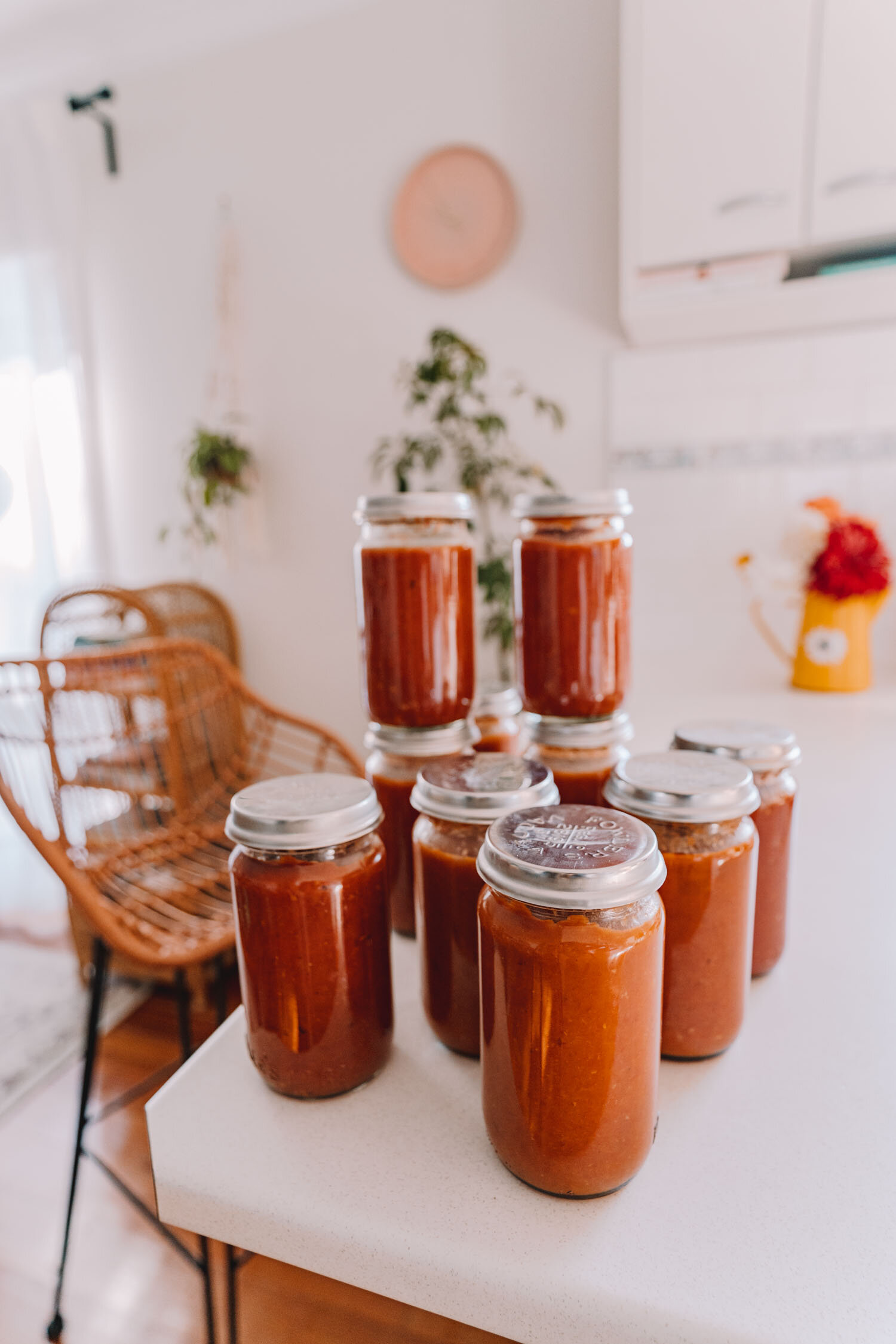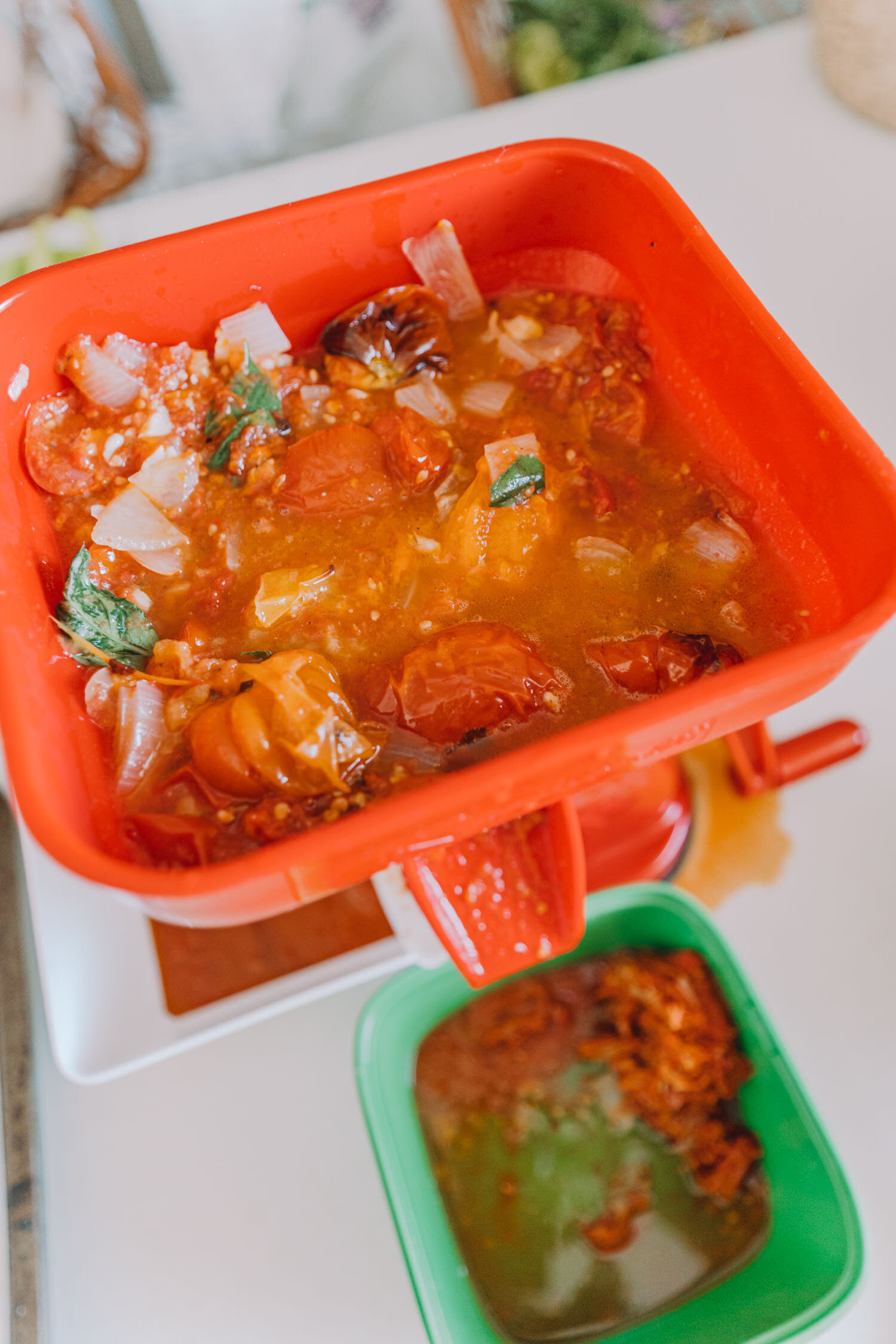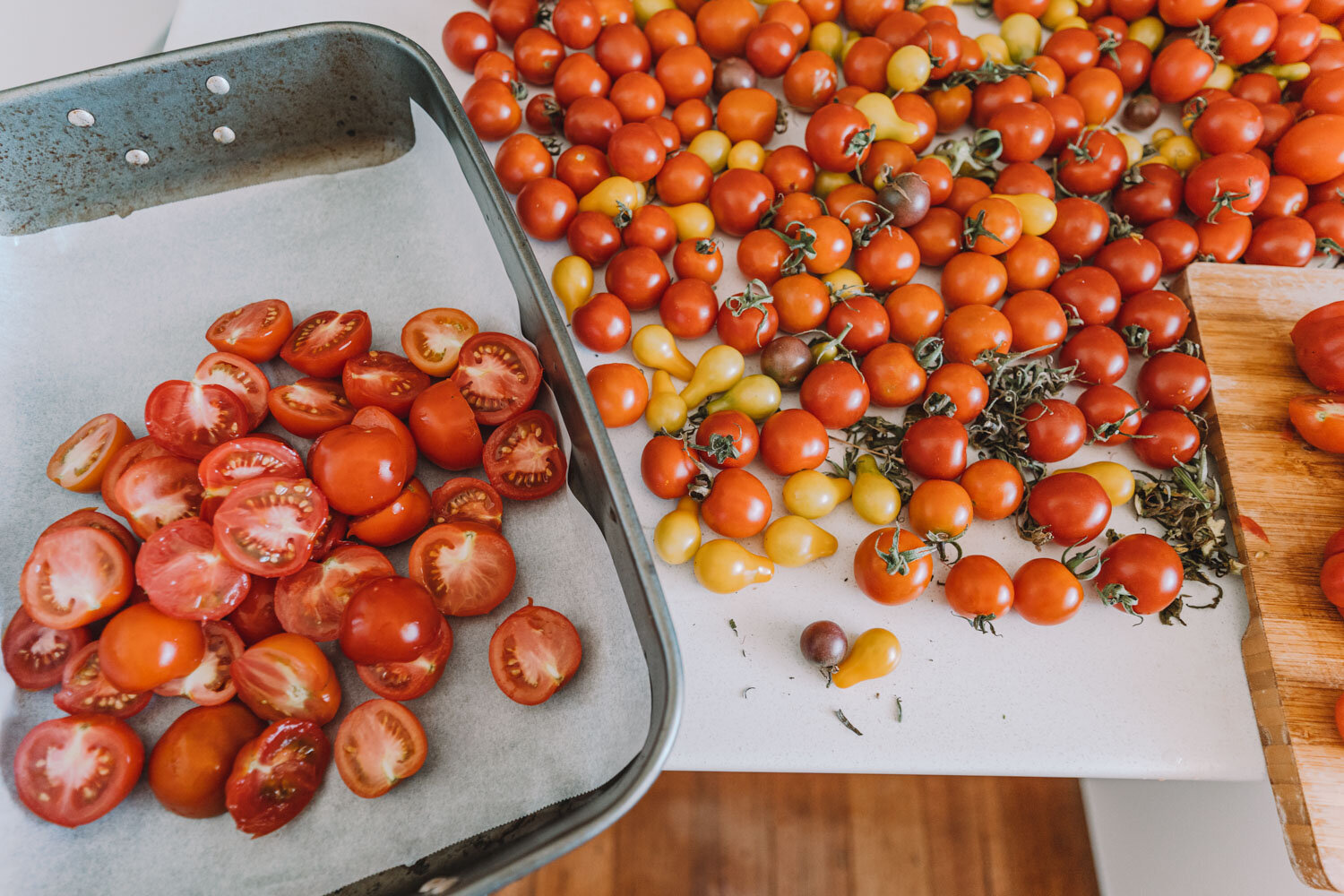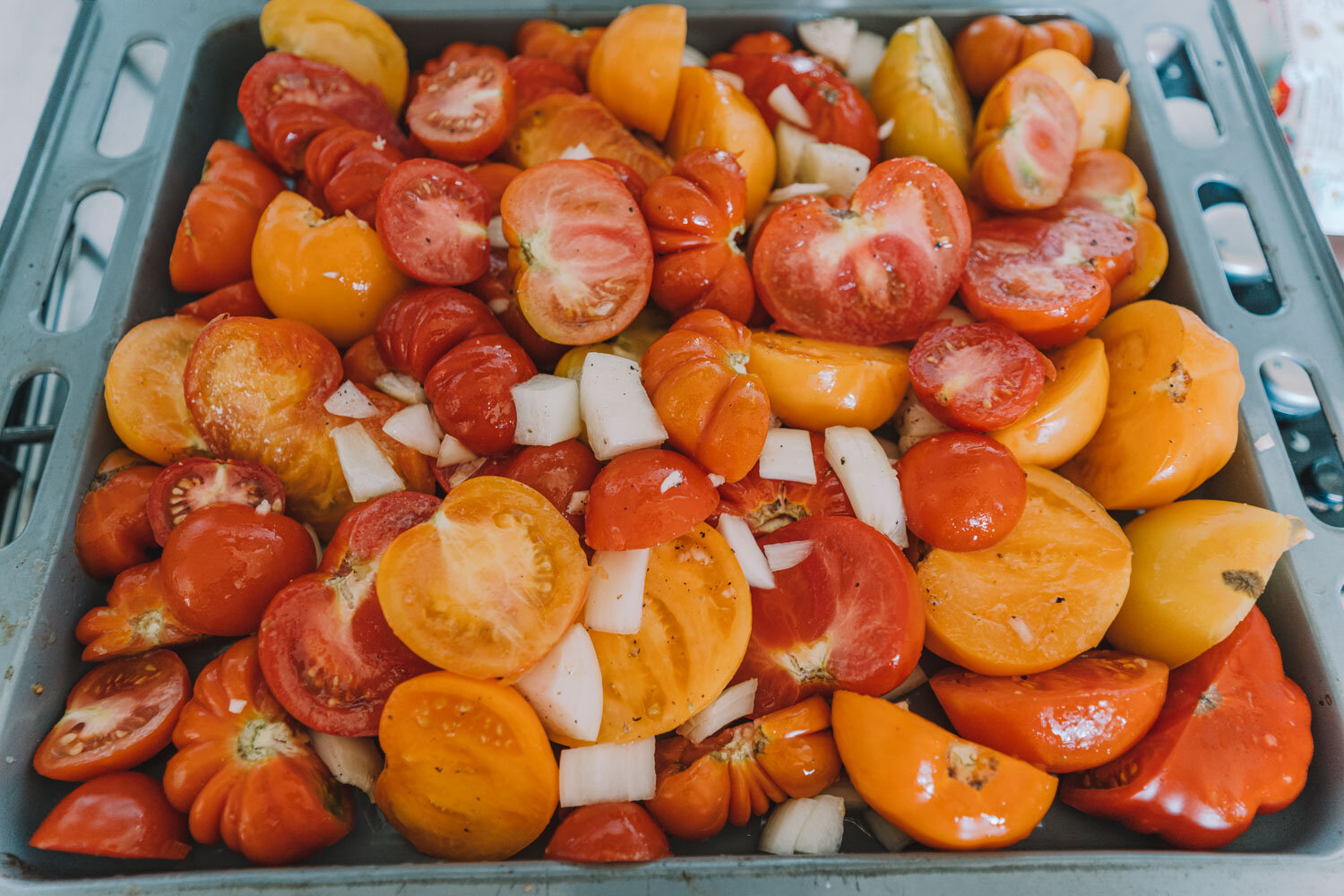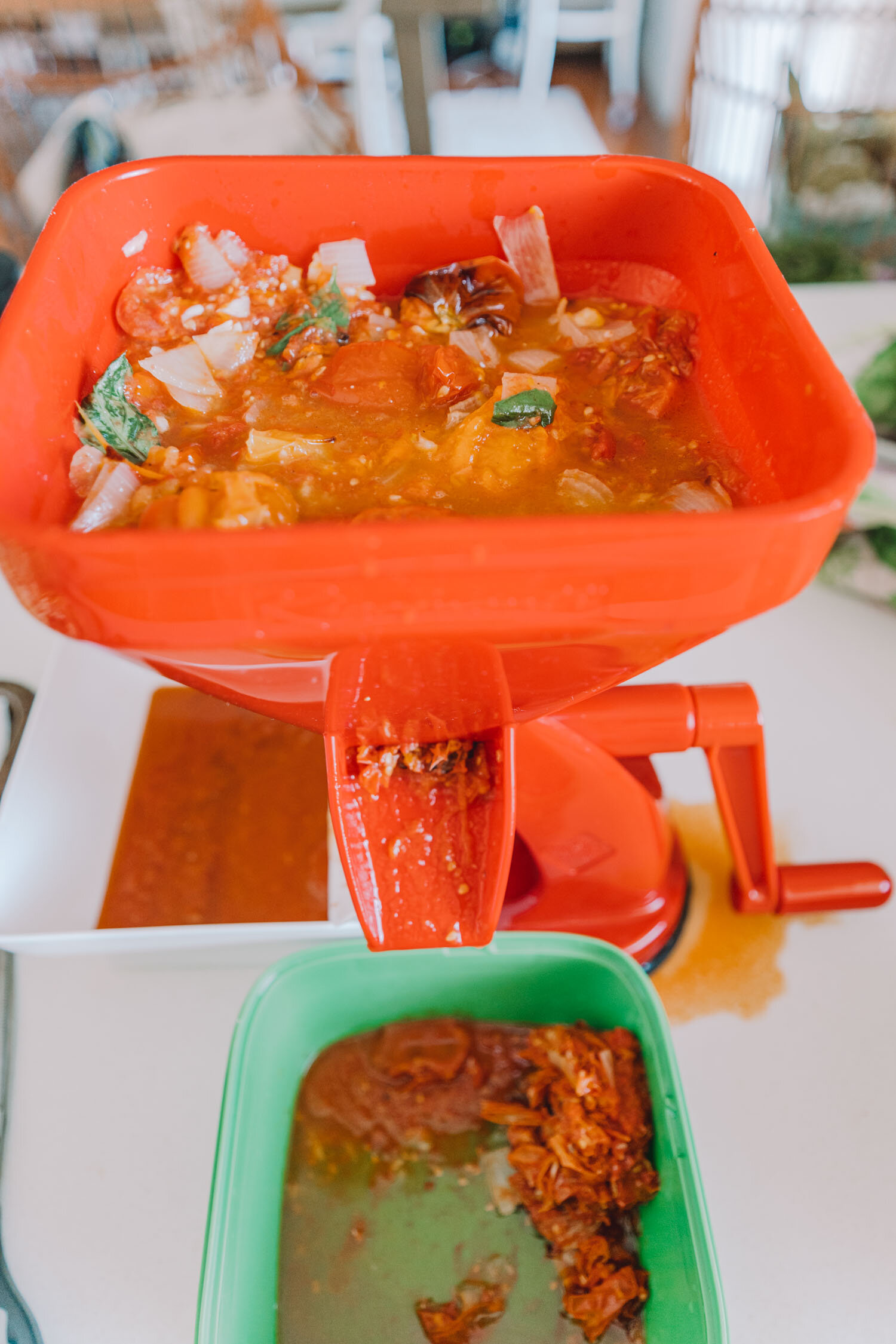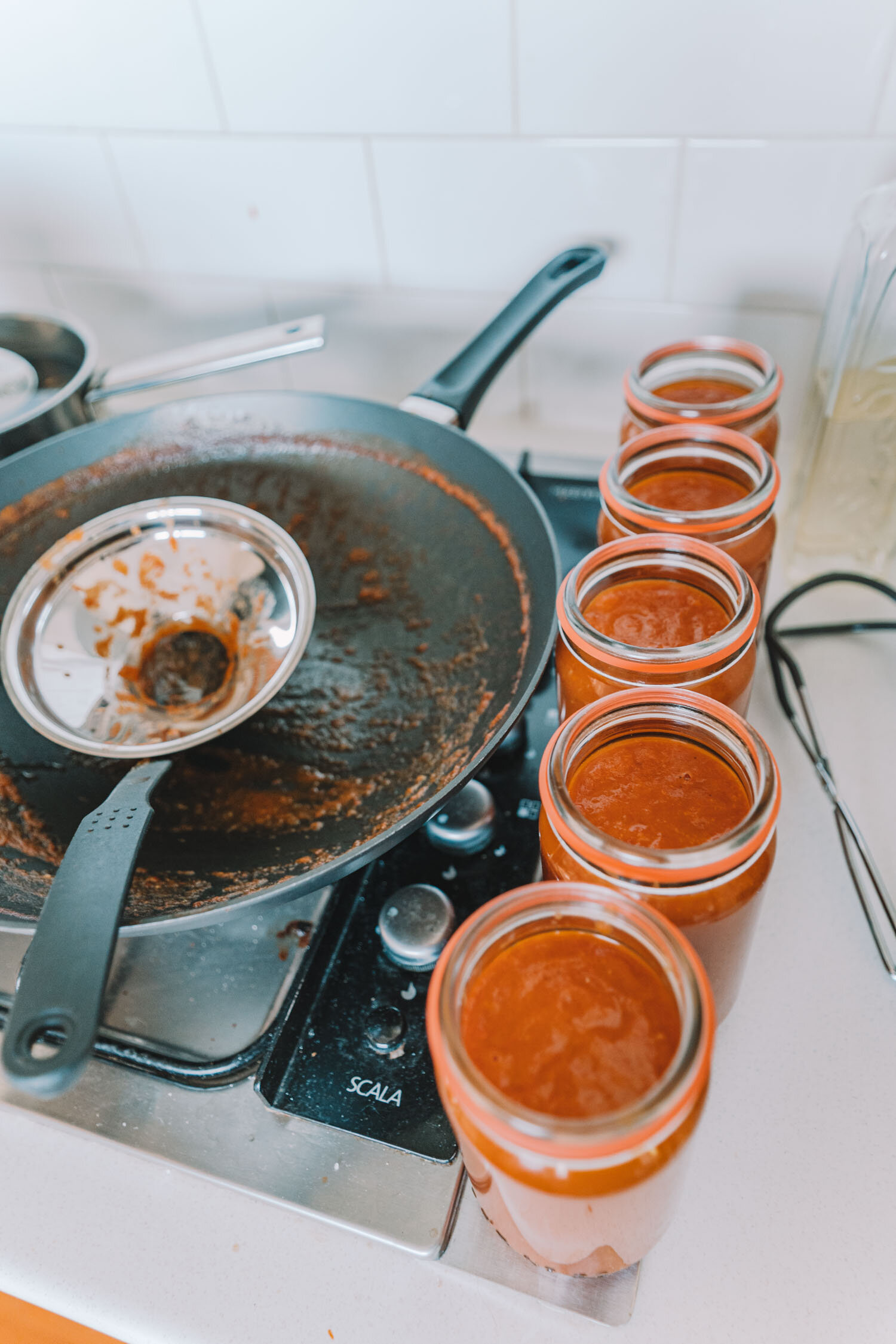How to use a Tomato Press to Make Pasta Sauce
Hey guys! I recently bought a tomato press and so many of you asked about it that I thought I’d do a blog post about it!
My permaculture friends and I are all mad about tomatoes. And for a while, I had been considering getting a tomato press but felt like it was a bit over the top until one day I was met with some 10 kg of tomatoes sitting at home waiting to be turned into sauce.
I bought my tomato press second hand, however if you google ‘tomato press’ or ‘manual tomato press’ you’ll be able to find many similar ones for about $50-$100.
In case you don’t know what a tomato press is, it’s a nifty little device that separates the tomato puree from the tomato skin and seeds. This is especially useful for those who want to make homemade tomato sauce or pasta sauce, as it gives you a delicious puree without having to peel tomatoes by hand. I use my tomato press to do exactly that, so that I can turn my glut of homegrown tomatoes into delicious pasta sauce which I then preserve to use in winter.
Before I bought one, I didn’t believe how it could do such a job. Now that I’ve got one, I can confirm that it most certainly can do such a thing and and more than willing to rave about tomato presses to anyone who’s even the slightest keen interested.
pros and cons
For those who didn’t even know tomato presses existed but suddenly feel like they need one, here are a few pros and cons to consider, based on my own research and experience in using one.
PROS
It efficiently separates tomato skin & seeds from tomato puree, and makes for an even more delicious tasting sauce.
It saves time in having to hand peel tomatoes yourself.
It’s easy to use and doesn’t take too much effort.
CONS
You will have to take the tomato press apart to clean it thoroughly with each use, so it’s best to press a large amount of tomatoes at one time to make the effort worth it.
My tomato press leaks at the base (which is a bit annoying). It seems to be a common occurrence which I’m sure I could fix if I looked into it.
You will get tomatoes everywhere! One thing I found is that tomato splatters everywhere when you’re turning the handle so I was able to remedy it by putting a large plate on top which just about tops this.
A tomato press is a pretty bulky device so you’ll need space to store it. And we are rapidly running out of space in our small kitchen!
All in all, I’m a big fan of my tomato press and would recommend it to anyone who wants to make tomato sauce, passata or pasta sauce for their household. Of course I’d recommend you take out your tomato press for large batches only as you want to make the cleaning worth it.
HOW TO MAKE PASTA SAUCE WITH A TOMATO PRESS
This year I started hot water bathing my preserves such as pasta sauce, pickled cucumbers and pickled beetroot. Hot water bathing essentially allows you to store your homemade pickles & such in the pantry for a longer period of time. The exact storage life depends on the recipe/items being preserved and not everything can be preserved using the hot water bath method.
Preserving itself has a lot of rules and so I think it’s best to leave it to the experts. A beginner book I super recommend is the Ball Blue Book Guide to Preserving which contains a thorough overview on various methods of preserving including the hot water bath method, as well as plenty of recipes.
However generally speaking, tomatoes can be preserved using the hot water bath method. Whilst not recipes call for it, I add in citric acid to my preserved jars of pasta sauce to ensure it has the amount of acid it needs for safe preserving.
Where the tomato press comes in is that when I’m making my pasta sauce, I usually roast tomatoes, garlic & onion in the oven. Once that is done, I put everything through my tomato press so that all the skins and seeds are pushed out leaving me just with the sauce consistency I want. Then, I reduce the sauce over the stove until it’s at the thickness I want, before putting them into sterilised jars with citric acid & then hot water bathing them for storage.

